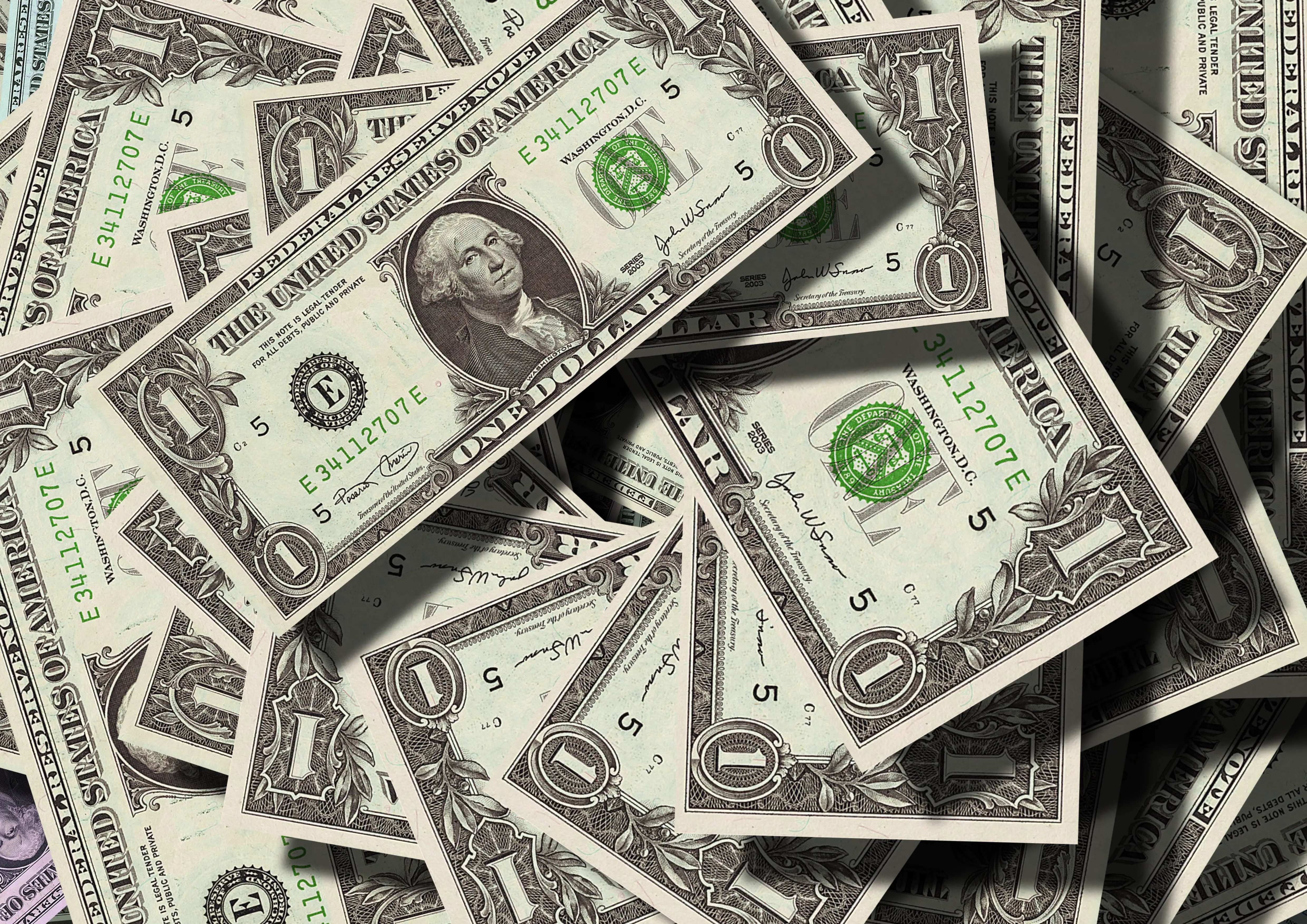Money-saving charts are perfect for visual creatives who want to let their creativity flow and their financial goals unite.
Are you finding it tough to save money? You’re not alone.
Before the pandemic crisis hit, a Federal Reserve report found that 40% of Americans would have difficulty paying for an unexpected $400 expense.
Meanwhile, a recent survey from Bankrate.com found that only 39% of Americans could cover an unexpected $1,000 expense. Aside from that, another study from Personal Capital found that American’s considered $500,000 to be the average amount that will make them financially secured.
While it all varies widely per person and their unique life situation, the pandemic has been a financial wake-up call. It prompted us to rethink how we plan for the future and ultimately gave us a clear picture of our overall desired financial status.
Still, most people struggle to save enough for a comfortable cash cushion.
However, it may be challenging to save right now but remember, it’s not impossible. Besides, there are plenty of realistic ways for you to incorporate and form saving habits that will last beyond the current crisis.
Therefore, if you’re looking for more ways to pinch those dollars, tune in!
So, are you more of a visual type of person? You will surely love these money-saving charts ideas!
Let’s get right in!
Related reads: 17 Money-Saving Challenges to Definitely Help Save More Than Before
Money-Saving Charts Ideas [Free Printables + Fillable PDFs]

One way to pump up your savings strategy is to use money-saving charts.
Essentially, money-saving charts are printables or downloadable pdf files that you can use as a visual aid to help you keep track of your current savings goals.
Ultimately, these charts can be used by everyone! So whether you are already taking charge of your finances or a novice religious saver, there are suitable money-saving charts for you!
Moreover, if you want to add inspiration or motivation to help you get started or continue saving money, these charts ideas will help you get there.
It’s free, fun to do, plus you can choose and create your money-saving charts depending on your money goals and personality that will suit you.
52-Week Savings Challenge
The 52-Week Savings Challenge is one of the most popular savings challenges out there. So you can start right away with it!
It’s easy to do. All you have to do is save a dollar each week and watch it grow. For instance, for the first week, you must set aside $1, then for week 2 save $2, and for week 3 $3, and so on.
On the final week within the whole year, you’ll save $1,378.
We highly recommend the 52-Week Savings Challenge because, at such small steps, you get to add it all up and see the benefit of saving money. Plus, it’s easy to get started, and you can do it even if you are living paycheck to paycheck or on a low income.
If you find it boring or too easier for you, try to double it up each week. Hence, you can do $2 for the first week, $4 on the next, and $6 on the third week, and so forth.
Another way is to do it in reverse order. Although you’ll start with $52 on the first week, you’ll get ease by saving a little then at the end of the year.
Get your money-saving charts here.
90-day $1000 Emergency Fund Chart
Another money-saving charts ideas we have for you is the 90-day $1000 Emergency Fund Chart.
An emergency fund is the heart of anyone’s finance. Everyone must have a safety net of cash worth three to six months of their expenses to use for sudden and unexpected life events such as job loss or sickness.
Therefore, if you want to build your emergency fund, you can do so within three months!
We cannot emphasize enough how crucial an emergency fund is. But mostly, anyone who wants to take control of their finances should begin with saving for a safe cushion to take care of unexpected expenses.
While the common consensus is to stack up 3-6 months’ worth of living expenses, the amount to save in an emergency fund depends on the stability of your job, income level, and other lifestyle factors.
But one thing we can all agree on is that everybody needs one; how much is up to you to determine.
Moreover, you can start by downloading your copy of the 90-days Emergency Fund Chart here.
$10,000 in 365 Days Savings Chart
Let’s uplevel, shall we?
Do you have ambitious goals? Then, why not save your first $10,000 in one year smoothly!
Besides, who wouldn’t want to have an extra $10,000 sitting in their savings account? Although it may look intimidating and difficult to save it first, you can achieve this savings goal with a bit of determination mixed with proper discipline.
Start today to save your first $10,000 and get your money-saving charts here.
How about saving $10,000 in 6 months?
It may be tough to save this amount in such a short period (half a year), but it’s plausible.
You can start tucking in $275 in a week and double it on the next, say $475. Then, you can alternate each week between these amounts.
More importantly, whatever the level of comfort plus the amount you are willing and can keep, you are doing fine.
In addition, to get that $10,000 rolling, you can either curb your spending or generate ways to make more money. For instance, you can start a side-hustle or part-time freelance work.
Related reads:
- 36 Best Ideas to Earn Extra Money in 2021 and the future
- Top 10 Best Online Teaching Jobs in 2021: Teaching Side-Hustle
$5000 in 3 months Savings Chart
Most significantly, money-saving charts are a great way to start saving for your specific financial goals. For example, one is to keep $5000 in three months.
With this additional $5000 at hand, you can use it to accelerate your emergency or sinking fund. Another way is to add it up to your savings or for paying down debts.
You can do many things by saving this amount and targeting it towards your specific savings goals.
Start your journey today here.
No Spend Tracker
Lastly, one great way to save more money this year is to incorporate the no-spend challenge!
Ultimately, you can customize your desired timeline whether you want it to last more than a week, month, or even year!
You will use the no spend tracker when you choose not to spend a single penny during those days or weeks.
Of course, you will still have to spend money on essentials like your food or mortgage. But with this no spend tracker money-saving charts, you get to have an alternative. Instead of making money outflow, you are keeping your wallet shut.
Essentially, you’ll not dip into your wants or those expenses that will not affect your daily life. For example, books, entertainment, going out, etc. So again, you can do a no-spend month, no-spend week, or no-spend weekend.
Furthermore, you can also include a few exceptions for this no spend rule of yours. Therefore, if you want to trim the fat, the no spend challenge is the answer!
It’s more lenient, plus you get to tailor-fit it according to your situation.
Print or download your no spend tracker here.
Further reading:
How do I make a saving chart?

Rather than seeing these money-saving charts as a restriction to your finances, view them as a helpful guide instead.
If you don’t know how and where to begin, here’s what you should do.
1. State your intentions.
Most significantly, money-saving charts are more than just fancy decorations to be displayed on your bedroom wall or work table.
You should have your inner core as to why you are doing it. What’s your purpose, and what are you saving for? Say your reasons and know your intentions; let them aligned with your goals.
That way, your money has a sense of direction. So, yes, you are saving money, and it’s not just for pure fun.
2. Print or Digital.
Another way to consider is whether you want your money-saving charts to be a physical copy where you can paste it on your wall or anywhere visible within your house or use a digital one.
Depending on your preferences, you can choose between the two as long as you know which works better for you.
3. Customized it!
What’s excellent about money-saving charts is they are customizable.
Whatever the amount you seek to save, there’s a helpful guide chart or tracker for you to keep you in check. It comes with various layouts and designs, plus you can create yours too!
You can do it manually by designing and drawing on paper or digitally through photo editing apps and software like Canva or Photoshop.
What’s more, you can have multiple money-saving charts for any particular goals you have in mind. For example, you can have a visual diagram for different things you want to save for, i.e., vacations, shopping, debt payment, among the few.
4. Make it a habit.
Saving money should come like second nature to you. It should be automatic and comes easy to you like you don’t have second thoughts about brushing your teeth.
Therefore, make it a habit to keep track and fill up your money-saving charts.
It would be best if you would make it obvious (put your chart or tracker in visible areas every day), attractive (correlate your goals), easy (start little), and satisfying (treat yourself in the end.)
That way, you are also forming healthy financial habits along the way.
5. Have fun.
Lastly, enjoy! Be patient, and don’t be too hard on yourself for when you don’t feel like checking in with your tracker, or you’ve lost count of which weeks or days you should be. Just keep going.
It’s natural to feel discouraged or pretty slow, especially in the beginning and middle part of your savings journey. However, everyone experienced the same so don’t feel pressured.
Have fun seeing your progress and encourage other people with you too. You can have an accountability partner to check in with or share your progress with your loved ones.
Key Takeaways

In a nutshell, money-savings charts can make saving money more fun and inspiring, plus build your savings accounts fast.
It’s a simple tool to use, helping you keep in check and not to overspend. You can save more money if you have a compelling reason and a visual guide, more so if you’re a visual learner.
Furthermore, you can explore your creativity because of the flexibility it gives you. Make your printables or tracker, or use our free money-saving charts ideas above.
So, jumpstart your saving goals and enhance the quality of your financial life.
Begin with these free printable and downloadable tools today. Best of luck and have fun!
Have you tried saving with money-saving charts and trackers? What was your experienced? Let us know your thoughts below.
If you haven’t tried using trackers and saving charts, it’ doesn’t hurt to try! Don’t hesitate to comment below or if you have any questions, shoot us one; we’ll get back to you soon.










0 Comments